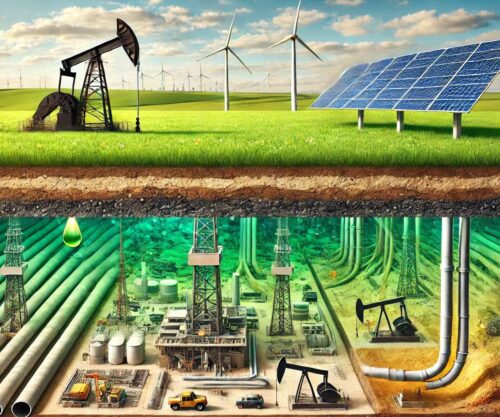
Whether China’s threat to restrict the export of rare earth minerals materializes or is resolved through trade negotiations, the episode underscores the fragility of U.S. supply chains and the importance of developing domestic sources. [emphasis, links added]
Nowhere is this more evident than in the energy sector, where climate policies have made dozens of countries more reliant on imports than ever before.
Adherence to climate orthodoxy has repeatedly exposed countries to avoidable risks, each instance demonstrating the cost of subordinating real-world utility to the pseudoscience of theoretical models and the grifting of special interests.
The reshuffling of the global flow of oil and coal after 2022 exposed the foolishness of the anti-fossil fuel agenda.
European nations, led by Germany and the United Kingdom, embarked on aggressive phaseouts of fossil fuels, dismantling coal plants and shrinking domestic natural gas output in favor of wind and solar.
Domestic production of hydrocarbons collapsed, and reliance on imported energy spiked, particularly for the Germans and British.
As Europe turned away from Russian coal, it rushed to buy that fuel from the U.S., Qatar, and Africa, often at much higher prices.
Coal that Germany once imported from Russia was replaced with fuel shipped from more distant locations, undermining the supposed “carbon savings” of its climate policy.
When Russia’s gas pipeline became a casualty of war, Europe found itself reliant on liquefied natural gas shipments from the U.S. at double the cost.
Bureaucratic obstacles to restarting coal- and gas-fired power plants further magnified shortages, driving up costs for manufacturing and household heating.
Energy-intensive sectors—steel, aluminum, fertilizers—either shut down or relocated to countries with more reliable and affordable electricity, among them the U.S. and India.
In the United States, federal climate-centered policies presented new bottlenecks.
The Biden administration’s Inflation Reduction Act poured billions into “renewables” and imposed restrictions on offshore drilling and pipeline construction. Supply chain resilience was undermined by the ideological sidelining of cheap, abundant fuels.
Why does a nation willingly trade resilient domestic energy for unreliable sources that are bound to fall short of its citizens’ daily needs and fail disastrously during a crisis?
How can policymakers justify burdening entire industries with inflated energy costs to satisfy “net zero” policies based on wishful thinking and vacuous rhetoric?
For some, the answer is ideological purity and muddled thinking, and for others, a cynical grab for power and money.
Every megawatt of domestic energy production mothballed in pursuit of climate targets is a future vulnerability that materializes not in white papers but in tangible hardships for people.
Countries with rigid “green” energy mandates fared worst during disruptions; those with diversified, fossil-based power grids bounced back faster. Countries that continued investing in fossil fuels—such as India and Indonesia—did far better.
As Europe suffered under the high cost of electricity, India accelerated coal production, expanded refinery capacity, and signed long-term liquefied natural gas deals. Indonesia leveraged its coal and oil resources to stabilize domestic power and shield consumers from global volatility.
These are examples proving energy pragmatism—not ideology—safeguards national interests. The failure of the “net zero” experiment lies in its detachment from physical reality.
Fossil fuels remain the foundation of modern civilization—powering transport, agriculture, defense, manufacturing, digital technology, and more.
Governments must repeal the labyrinth of regulations that stifle domestic oil and gas exploration and coal mining.
They must fast-track the approval of pipelines, refineries, and liquefied natural gas export terminals. They must end the colossal subsidies that prop up unreliable technologies and allow energy sources to compete on cost and reliability.
Top image by Peter H from Pixabay
Read rest at Daily Signal



















When will people wake up? Will a dollar per kw wake them up?